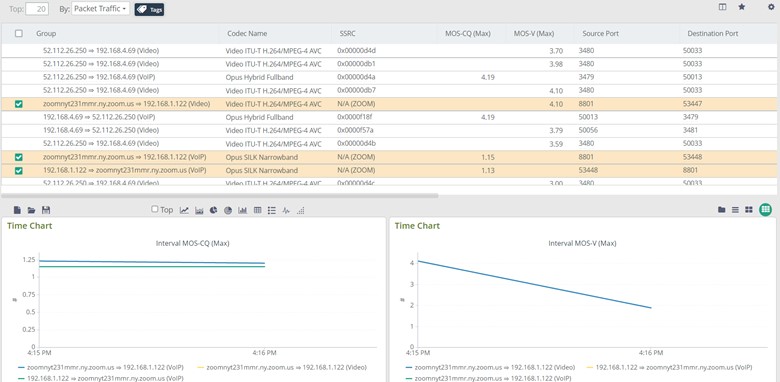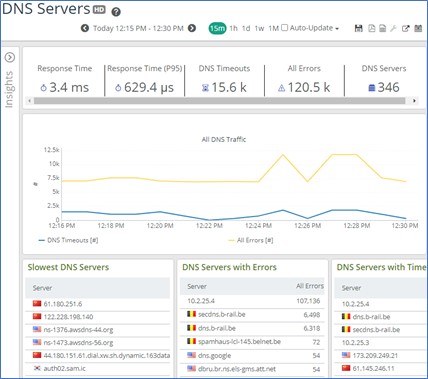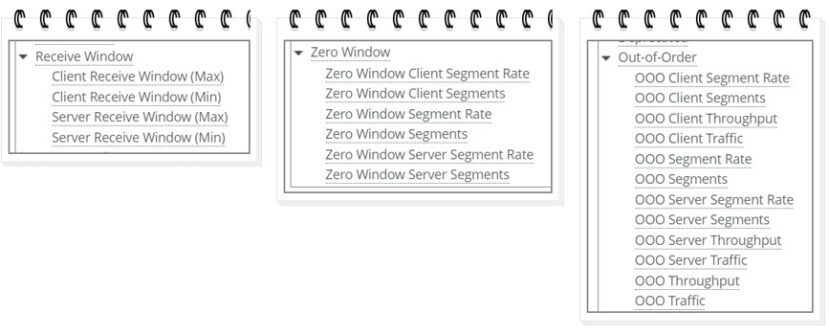Zoom, Teams, DNS and New TCP Analysis Extract Application and Network Intelligence | Riverbed|Aternity
With the vast bulk of the world’s white-collar workforce working from home during the COVID-19 pandemic, there was an explosion in demand for communication tools like Zoom, Slack, and Microsoft Teams. The recent Riverbed|Aternity Hybrid Work Global Survey of business and IT leaders found that 83% say at least a quarter of their workforce will work remotely at least part of the time even after the pandemic. In fact, 84% believe that hybrid work will have a lasting and positive impact on society and the world.
While most organizations are not fully prepared to deliver a seamless hybrid experience, nearly all have adopted some remote communication and collaboration tools. Despite this, a surprising 31% still need collaboration and virtual relationship building.
Zoom is the leading communications app with 300 million daily meeting participants, both paid and free,1 while Microsoft Teams hit 250 million monthly active users in July 2021.2
The one problem with these and other collaboration solutions is that they are bandwidth-intensive and often suffer from performance issues, especially when users are working from low-bandwidth home networks.
Zoom and Teams
To solve this problem, Riverbed AppResponse added full visibility into all Zoom and Teams media, voice and video. The AppResponse Unified Communications Analysis (UCA) module can now auto-detect Zoom and Microsoft Teams media streams. Customers can now better support Zoom and Teams audio and video traffic and surface the full complement of quality metrics, such as MOS-CQ, MOS-V, Jitter, packet loss, new channel rate, and more. These details will help IT diagnose call and video quality issues.

DNS
The Domain Name System (DNS) is like a phonebook for the Internet. It translates a web domain name into an IP address and vice versa. People access websites through domain names, like Riverbed.com or Aternity.com then the web browser interacts through Internet Protocol (IP) addresses. In short, DNS translates domain names to IP addresses so browsers can load Internet resources.
AppResponse 11.12 added three new DNS Insights to the Application Stream Analysis (ASA) Module to help troubleshoot the DNS performance and security issues, such as:
- DNS service outages, i.e., “Can’t find server”
- High DNS latency or high load times
- DoS or DDoS attacks that can bring down the service
The new DNS Insights include:
- DNS Servers—analyzes all DNS servers. The types of metrics on this chart include All DNS Traffic with DNS Timeouts and All Errors, Slowest DNS Servers, DNS Servers with Errors, DNS Servers with Timeouts.
- DNS Server—shows results for an individual server. The metrics in the chart include DNS Requests & Responses, Response Time TruePlot, DNS Timeouts, DNS Errors, and a new graph called Top Queried Domains.
- DNS Transactions—helps you understand the performance of individual DNS transactions. The types of metrics you can utilize include DNS Errors, DNS Response Time, Slowest DNS Transactions, DNS Timeouts, Query Names, Client Groups, Client IPs, Server IPs, Opscodes, Query Types, and a GeoMap.

Here’s an example of the types of metrics you will find with the DNS Servers Insight.
TCP Metrics
TCP is the heartbeat of the network. In fact, it’s the protocol used by nearly all modern applications and the AppResponse ASA module functions like an MRI for TCP, providing rich details into TCP-based apps. In fact, ASA calculates more than 60 health and activity metrics for TCP.
This release is taking our TCP analysis to the next level by adding TCP Receive Window, TCP Zero Window, and TCP Out-of-Order to the ASA module. These new TCP metrics enable NetOps users to diagnose these serious problems without having to dive into the packets using Riverbed Packet Analyzer Plus or Wireshark.
- TCP Receive Window—is the amount of free space in the client’s receive buffer. This field tells the sender how much data can be sent before an acknowledgment is received. If the receiver is not able to process the data as fast as it arrives, gradually the receive buffer will fill and the TCP window will shrink. This will alert the sender that it needs to reduce the amount of data sent to allow the receiver time to clear the buffer.
- TCP Zero Windows—happens when the client says, “I don’t have any available buffer space, stop sending data.” This tells the TCP sender to stop sending data. Typically, this indicates that the network is delivering traffic faster than the receiver can process it. When the client begins to digest the data, it will let the server know to resume sending.
- TCP out-of-order—occurs when a packet has a sequence number lower than the previously received packet. If too many packets are received out of order, TCP may cause retransmission of packets, like dropped packets. As such, the impact of out-of-order packets is can be similar to packet loss.

These are the three new TCP Insight pull-down menu options.
Other New Features
Other features released in AppResponse 11.12 include:
- The ability to search TLS Handshake and DNS Transactions, in addition to previously supported Web and Database queries
- The ability to import/export custom Insights
- Business Hour profiles for Insights & Navigator; in addition to previously supported Scheduled Reports and Policies
- Remote out-of-band system access and management for AppResponse xx80 appliances
- RFC 5425 encrypted Syslog notifications
- Performance improvements for HD (High-Def) queries
If it wasn’t clear, the theme for this AppResponse release was application and network intelligence—the ability to extract useful network and application performance information via real-time packet analysis. It’s our hope these new features make your life easier and your network safer and higher performing.
Riverbed AppResponse customers with support contracts can download AppResponse version 11.12 for free from the Riverbed Support Site. Otherwise, click here for more information.
1https://www.businessofapps.com/data/zoom-statistics/
2https://www.zdnet.com/article/microsoft-teams-hits-250-million-monthly-active-user-milestone/
This post was first first published on Riverbed Blog’s website by Heidi Gabrielson. You can view it by clickinghere

